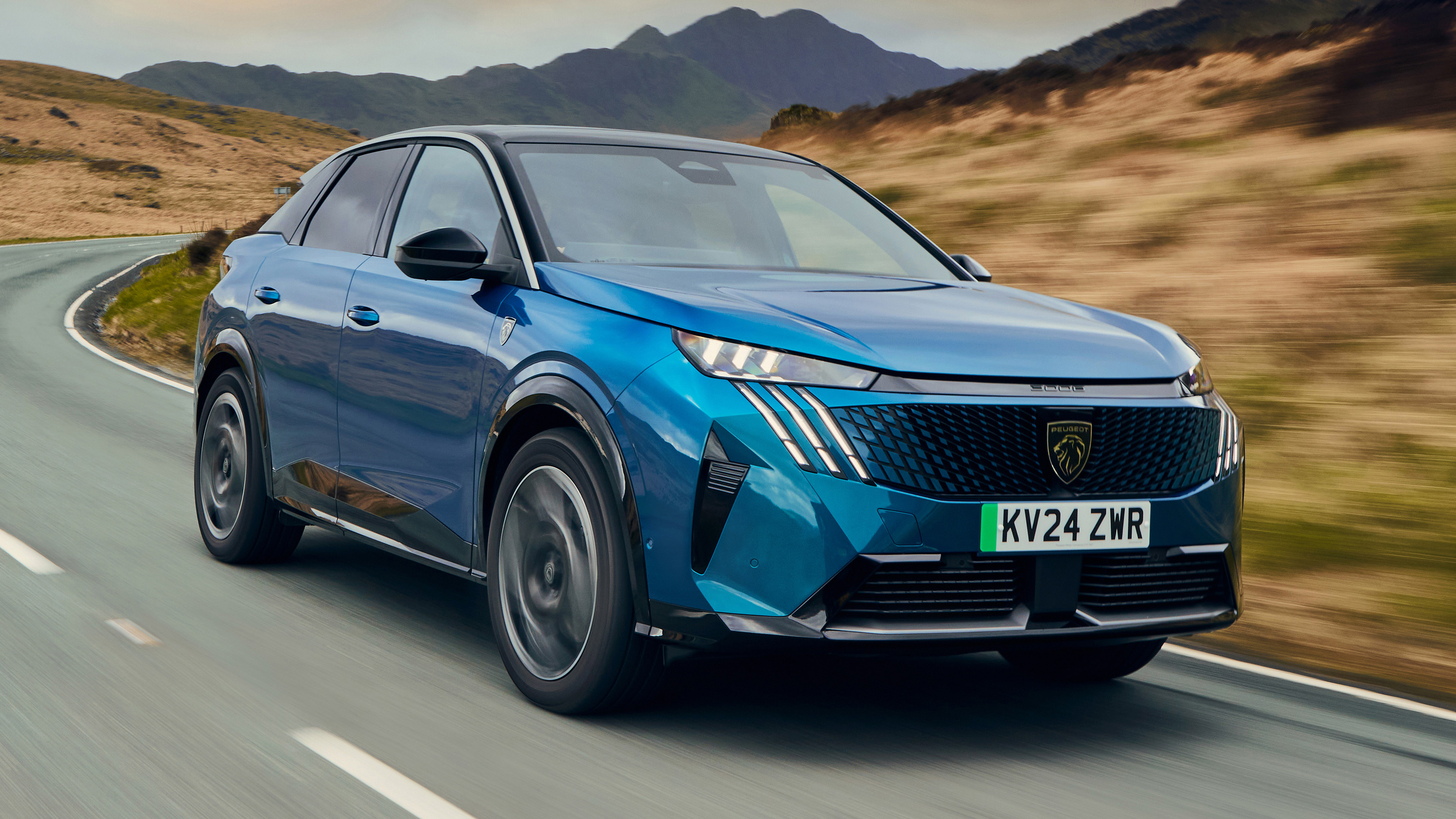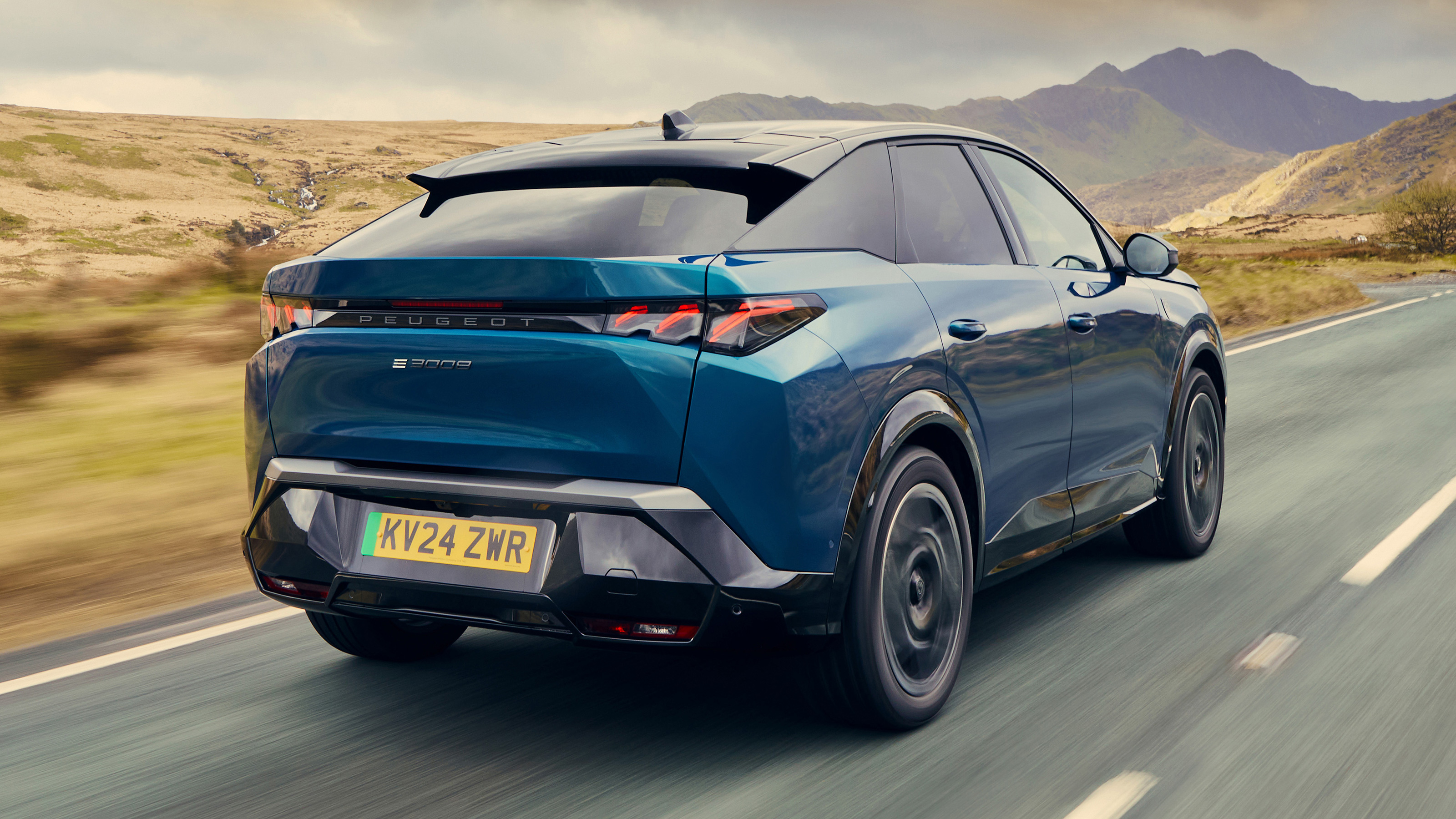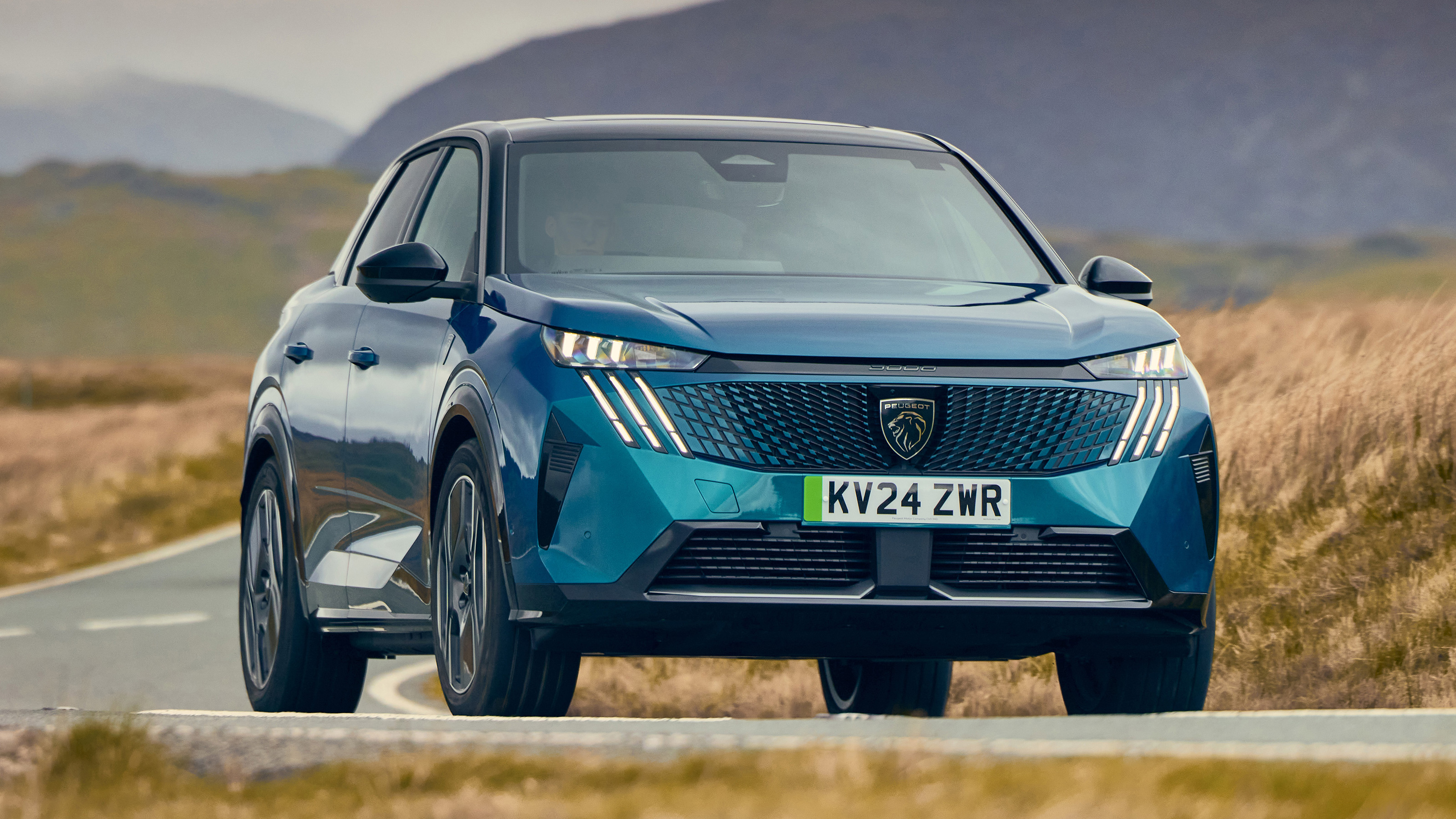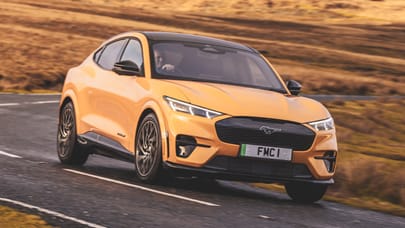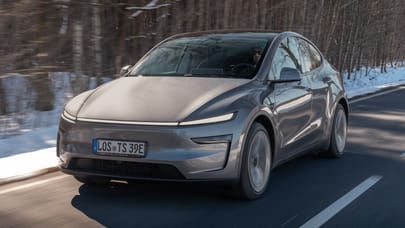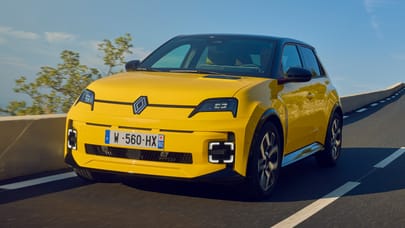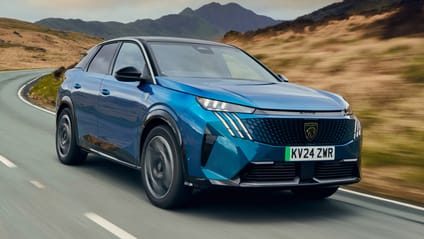
Good stuff
Long range, attractive and plush cabin, good HMI, very refined
Bad stuff
It’s heavy and feels it, only average rear space, heat pump isn't standard
Overview
What is it?
Here's the replacement for the car that turned Peugeot around, the 3008. The outgoing one was good-looking, had a beautifully furnished cabin and was good to drive. Spoiler: so is the new one. But with one dramatic if not unexpected change.
We're driving the all-electric version here. You can also have it in mild-hybrid petrol form, with a plug-in hybrid to come at a later date.
That choice of propulsion stacks it up against a whole bunch of rivals. For the electric, think Tesla Model Y, Volvo EX40, VW ID.4 or ID.5, Renault Scenic, Hyundai Kona Electric or Ioniq 5, Kia Niro EV or EV6, Nissan Ariya, Toyota bZ4X, Ford Mustang Mach-E and BMW iX1. It comes in two battery sizes, with either a single motor at the front, or twin at front and rear.
Go on then, hit me with the EV stats.
The headlines are impressive. We tested the one with a 73kWh battery, for a range (with FWD or AWD) of 326 miles WLTP. And that's the smaller of the two options, because eventually the top one will be a humongous 98kWh slab, for 422 miles WLTP. So the range comes not just from big batteries, but running efficiency too.
Frankly, the smaller pack is as much as any family needs: the kids will be busting for a wee stop long before it needs a charge. But road-warrior fleet buyers will be reassured by the bigger one. They're in too much of a hurry to risk a stop on the way to present their .ppt to the regional directors' conference at the national headquarters.
Peak charging is 160kW, and if you find a charger that'll do it, this means 20-80 per cent in half an hour (which is an 87kW average).
How new is it?
The EV version is end-to-end new. Body, platform, suspension, interior and screen system, battery. Les neuf metres entières. But Peugeot reckons a strong brand needs to be consistent, so its styling is recognisably a descendant of the old one. Most striking difference is the fastback tail, to cut drag and improve electric efficiency.
The platform will underpin a hugely important posse of cars under the ginormous Stellantis umbrella: the next Vauxhall Grandland is coming very soon, and you don't have to be Hercule Poirot to deduce a Peugeot seven-seat 5008 too and later a 508. But the range is extremely broad, from a sporty Alfa Giulia replacement via DS and Lancia to the chunky and hardish-core off-road Jeep Recon. Plus, for those in Americaland, the Chrysler Airflow.
That's a big battery for a multi-energy platform?
Good spot. We usually say that purpose-designed EVs are less compromised than adapted combustion ones. So we asked the engineering chief on this car how they'd done it and he was blunt: "It's three different platforms [EV, ICE and PHEV] with one car on top."
They share suspension and front crash structure, but the whole central underfloor and rear structure is different.
How does it work as a family car?
Peugeot hasn't allowed the dimensions to balloon, so it's the same size outside as the old one. Unfortunately that means there isn't extra legroom to compensate for the fact the underfloor battery steals foot space from the people behind. So the rear doesn't feel as roomy as in the rivals. Lanky teenagers won't thank their parents. But the boot's a good size. For more details click the Interior tab.
The screen and switchgear system is the latest version of Peugeot’s i-Cockpit setup, and although a 21-inch screen sounds intimidating, it's easy to use. The teenagers will be useful in setting up its many customisable layouts and shortcuts.
And for the driver?
It's fluid and accurate to drive, generally very unflustered and reassuringly solid. Not terribly inspiring though, as you're always aware of its weight: we want a car that feels more connected to the road. The steering lacks feedback because it has to be strongly assisted, and the e-3008 pitches into a tight corner slightly reluctantly, and floats a bit after a sudden lump in the road. Acceleration is on the leisurely end of the EV spectrum.
The engineer tells us that because the platform is designed for off-roaders and seven-seaters, this version has suspension and structure that's stronger – read heavier – than it needs to be. And that they chose not to use much aluminium as that would add cost. So even this lightest version is more than 2,100kg. Gulp. The more spacious Renault Scenic electric is a quarter-tonne less. At least the e-3008 has the muscle to pull a 1,250kg trailer; 1,350kg for the AWD one.
In one sense he's got a point. Aerodynamics at speed is what really affects EV range and efficiency, not weight. The 3008 has low overall drag for a car of its kind and it does turn out to be reasonably efficient.
Come one then, what’s the damage?
It’s not cheap. With no options the 73kWh one starts at £45,850, which is £11k more than the 1.2 petrol auto. Yikes. We dread to think what the 98kWh one will cost when it finally goes on sale.
Our choice from the range

What's the verdict?
For an all-new start, the e-3008 doesn't feel like a revolution. For many, that'll be a win. Design and cabin are evolved and improved. There's none of the shock-value of VW's MEB cars, which polarised people with their switch to RWD, pared-back cabins and stupidly tricky interface.
The e-3008 isn't a clean sweep, though. Some families will want more rear space, and we regret its heavy-footedness. Peugeot has made a play for range by offering big batteries linked to high-efficiency motors and electronics. There's bi-directional charging too.
Cabin quality and design are strikingly attractive. The ride can get a bit thumpy, but overall it's refined and quiet, and easygoing over long distances. Which you’ll enjoy, because range anxiety melts away. This is a feel-good place to be.




